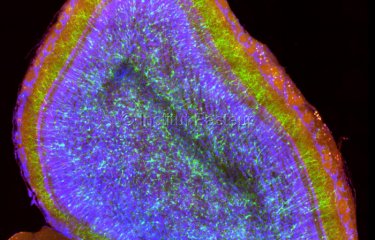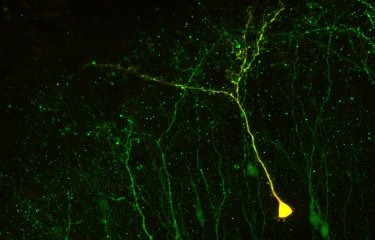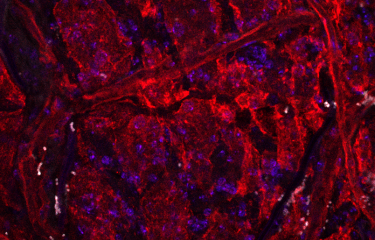Researchers from the Institut Pasteur and Inserm, in collaboration with the Centre de Biologie Cellulaire in Lyon, have obtained the first human neuron model for Sanfilippo syndrome, an incurable neurodegenerative disorder that occurs in children. This model is the tool of choice for studying the cellular mechanisms at the root of this disease as well as for identifying therapeutic options. The procedure, which involves stem cells, could also be applied to model other diseases, especially neurodegenerative diseases. This work has been published in the Human Molecular Genetics journal.
Press release
Paris, september 13, 2011
Sanfilippo syndrome, or Mucopolysaccharidosis type III, is the result of molecules called mucopolysaccharides that accumulate in several of the body’s tissues. Because of a genetic mutation, the body can no longer eliminate these molecules and their presence becomes toxic, particularly in the brain. Children affected by this disease suffer from significant mental retardation that manifests around 3 or 4 years of age and premature death before the age of 30. Unfortunately, there is no cure for Sanfilippo syndrome.
Until now, the only neuron models available to study the disease pathology were in mice: it was impossible to have access to neurons of human patients. Delphine Bohl, a researcher in the Institut Pasteur and Inserm Retroviruses & Gene Transfer Unit, obtained the first human neuron model for Sanfilippo syndrome. This constitutes a valuable tool in uncovering the remaining mysteries of the mechanisms that drive this disorder as well as in testing possible treatments.
In order to obtain this model Delphine Bohl and her colleagues worked with skin cells taken from patients suffering from Sanfilippo syndrome. First, the cells were reprogrammed as stem cells called “induced pluripotent” because of their capacity to differentiate into any type of cell of the body. The stem cells thus obtained were then forced to differentiate into neurons. Following this, researchers showed that these neurons developed the cellular defects characteristic of Sanfilippo syndrome. Today, these diseased cells constitute the first human neuron models for this neurodegenerative disorder and are a powerful tool in the study of its physiopathology in children.
The procedure used by the researchers can be used to create human experimental models for other neurological diseases. Currently, Delphine Bohl and her team are working to develop a human model for Amyotrophic lateral sclerosis, another neurodegenerative disease.
- -
These researchs are financially supported by the Conny-Maeva Charitable Foundation.
Source
Modeling neuronal defects associated with a lysosomal disorder using patient-derived induced pluripotent stem cells, Human Molecular Genetics, September 15, 2011.
Thomas Lemonnier (1,2), Stéphane Blanchard (1,2), Diana Toli (1,2), Elise Roy (1,2), Stéphanie Bigou (1,2), Roseline Froissart (3,4), Isabelle Rouvet (5), Sandrine Vitry (1,2), Jean Michel Heard (1,2), Delphine Bohl (1,2).
(1) Institut Pasteur, Retroviruses and Gene Transfer Unit, 28 rue du Dr Roux, F-75015 Paris, France
(2) INSERM U622, F-75015 Paris, France
(3) Laboratoire des Maladies Héréditaires du Métabolisme, Centre de Biologie Est, Hospices Civils de Lyon, F-69677 Bron, France
(4) INSERM U820, Claude Bernard University, F-69008, Lyon, France
(5) Centre de Biologie Cellulaire, GHE, Hospices Civils de Lyon, 59 Bd Pinel, 69500 Bron, France
Contacts
Institut Pasteur Press Office
Marion Doucet - +33 (0)1 45 68 89 28 - marion.doucet@pasteur.fr
Nadine Peyrolo - +33 (0)1 45 68 81 47 - nadine.peyrolo@pasteur.fr








